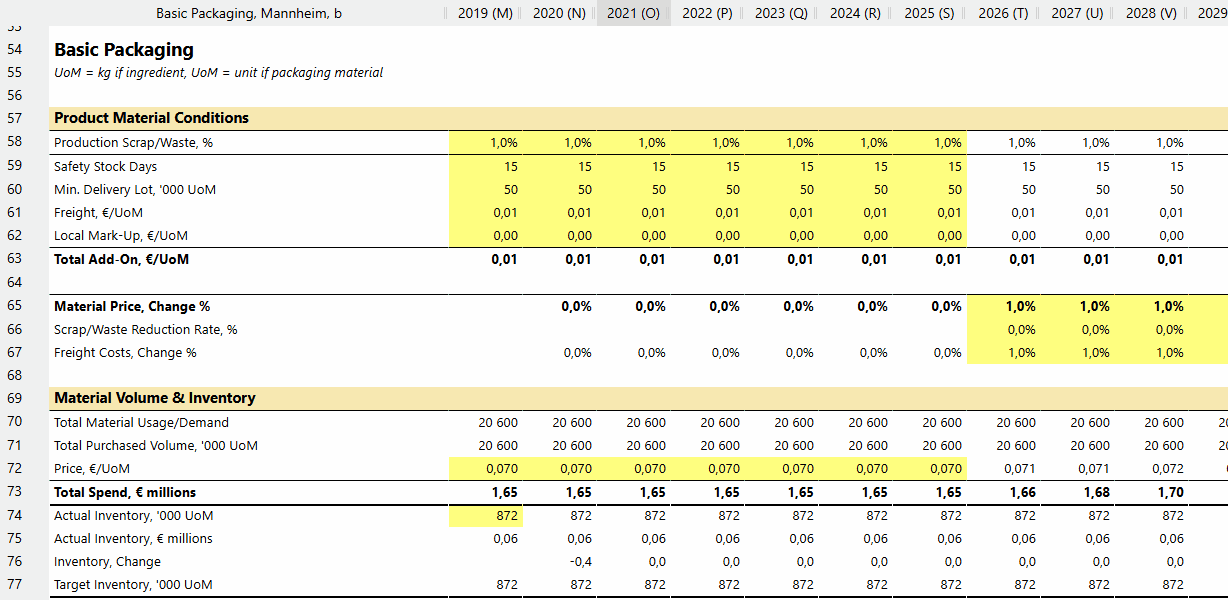Version 5.2 (CS) August 4th 2025
Stay up to date with the latest enhancements and features in Weissr Capex Strategy. This page highlights what’s new in this release so you can get the most out of your Weissr experience.
Editable short names for Strategic Building Blocks
To ensure consistency between Strategic Building Blocks (SBBs) and Strategic Alternatives (SAs), users can now edit the short name of an SBB. Previously, these short names were autogenerated and hidden from users in the alternative overview.
📍 What’s new
Autogenerated short names for existing SBBs will now be visible and editable.
For newly created SBBs, you will need to define a short name manually.
Additionally, we have introduced validation to ensure unique short names within each category:
An SBB cannot have the same short name as another SBB.
An SA cannot have the same short name as another SA.
However, an SBB and an SA can share the same short name.
SBB and SA short names are displayed in the alternative overview and are used in the cash flow model when exporting and referencing sheets.
Alternative short names now show in browser tabs
Multi-taskers, rejoice! You can now easily spot which browser tab belongs to which alternative without clicking through each one. We’ve updated the tab titles to include the alternative’s short name so you can quickly find what you’re working on.
The format follows this logic: Short name • Project name • Weissr
Example: ST001 • MASTER 2025 • Weissr
A small change that makes a big difference when you’ve got multiple tabs open!
Faster row selection in layout creation
Creating layouts just got a whole lot easier, especially when working with long sheets or complex block structures.
📍 What’s new
You can now use Shift + click to quickly select a range of rows in the layout creation view. This means:
No more clicking rows one by one
Huge time savings when you want to include most rows except a few
A smoother, frustration-free experience when working with large layouts
Improved performance when working in the cash flow model
Working in sheets just got faster and more responsive thanks to performance improvements in the cash flow model.
📍 What’s new
Vertical scrolling has been optimized for a smoother experience, even in large or complex models.
The model now recalculates only dependent cells and queues multiple edits, reducing wait times between inputs.
(Previously, the entire sheet had to recalculate after each entry.)Cells being recalculated are temporarily grayed out while they are recalculated, giving you clear visual feedback on what’s in progress.
These improvements help you:
See what’s changing in real time
Avoid editing cells mid-calculation
Work more efficiently without interruption
A subtle update that makes a big difference in your daily workflow!
Summary forms for alternative-level insights
We’ve introduced a new Summary form to give teams a better way to capture and present high-level strategic insights across alternatives.
📍 What’s new
You can now assign a Summary form to each alternative type within your form set.
Unlike node-specific forms (e.g., Site or Division), the summary form is tied directly to the alternative, appearing once per Base Alternative, Strategic Building Block (SBB), or Strategic Alternative (SA), if configured.
It’s ideal for capturing aggregated content such as:
Strategic rationale
Executive summaries
Consolidated assumptions and synergy effects
🛠 How it works
Summary forms are created the same way as any other form—via Administration → Capex Strategy → Form management → Forms.
You then assign the summary form in your form set, alongside forms for nodes and alternative types.
Once assigned, the summary form will be displayed in each applicable alternative, regardless of its structure or included nodes.
💡 A clean, effective way to capture strategy-level thinking without duplicating data across node-based forms.
New system properties
We’ve added a set of system properties to ensure important fields are always available and consistently displayed across all alternative types in Capex Strategy.
📍 What’s new
These properties are automatically available and can be shown on any suitable form. They support core functionality and help standardize your strategic data.
System properties include:
Name – Full name of the alternative
Short name – Abbreviated name of the alternative, used in reports and views.
Node name – Shows the associated organizational unit the form data refers to.
Creation date – Set automatically on creation
Model health – Indicates cash flow model calculation validation status
State – Shows if the alternative is active or inactive
👉 Learn more about system properties here
Anchored period referencing with SY() and EY() functions
You can now build smarter, more robust formulas using anchored referencing in model building with the new SY() and EY() functions.
📍 What’s new
These functions allow you to reference cells relative to the start or end of a period, keeping your formulas stable, even when periods shift.
SY(cell)andEY(cell)reference the start or end of the current periodSY(cell, n)orEY(cell, n)lock the reference to Period n (1–4)References automatically adjust if the start or end year of the referenced period changes
$is added to references when the anchor is in the same period
Function | Anchor point | Period defined by | When does the cell reference move? |
|---|---|---|---|
| Start of current period | The period where the formula is written | When the start year of the same period is modified |
| End of current period | The period where the formula is written | When the end year of the same period is modified |
| Start of Period n | Explicitly defined by the second argument (1–4) | When the start year of Period n is modified |
| End of Period n | Explicitly defined by the second argument (1–4) | When the end year of Period n is modified |


